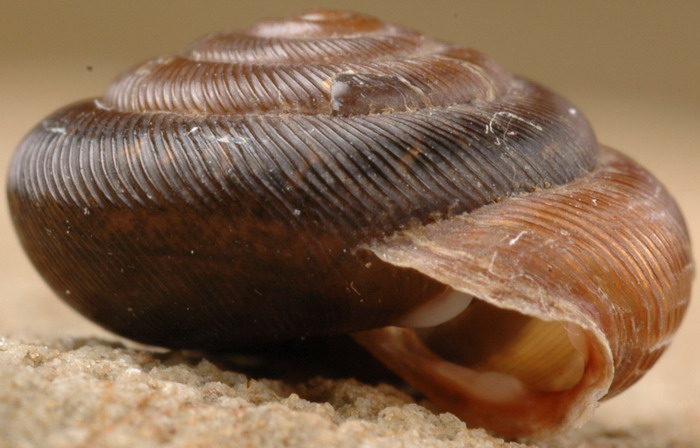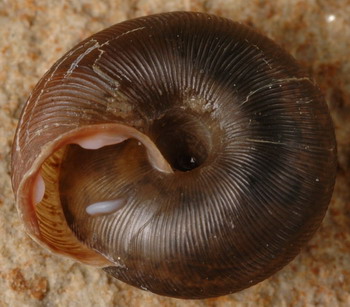Linisa texasiana
Kingdom- Animalia
Texas Liptooth belongs to the kingdom Animalia because it is a multicellular, eukaryotic, heterotrophic organism and also has a reproductive pattern which contains a blastula stage, which is unique for kingdom Animalia (Hickman, et al., 2009).
Phylum Mollusca
Texas Liptooth belongs to the Phylum Mollusca because it is an invertebrate containing a muscular foot (Hickman, et al., 2009). Animals in the phylum Mollusca contain an epidermal layer of tissue called the mantle, which covers the body of organism.
Class Gastropoda
The class Gastropoda is made up of snails and slugs (Hickman, et al, 2009). Gastropods develop with a body pattern known as torsion. Torsion causes the mantle cavity to lie over the head and causes the gut to twist because the mantle, foot, and the visceral cavity are rotated (Hickman, et al., 2009). Many gastropods' shells coil as the organism ages allowing the organism to retreat inside the shell. (Hickman, et al., 2009).
Order Stylommatophora
This order contains pulmonate gastropods with two pairs of invaginable tentacles. (Encyclopedia of life) The anterior pair of tentacles bears the eyes at their tip and are nearly always terrestrial. (Encyclopedia of life)
Family Polygyridae
Polygyridae is a family of air-breathing land snails and terrestrial pulmonate gastropod mollusks. They are different than other gastropods because they have no dart apparatus, the muscles that allow the eyes and pharynx to be retracted are together on a single band, and the jaws are ribbed. Polygyridae snails are abundant in Eastern United States, but are also found in Western United States, Central America, and some Carribean Islands. (Encyclopedia of life)
Genus Linisa
Scientific name
Polygyra texasian, or, Linisa texasiana
Continue to the next page to learn more about the Texas Liptooth and their habitat! Next Page

